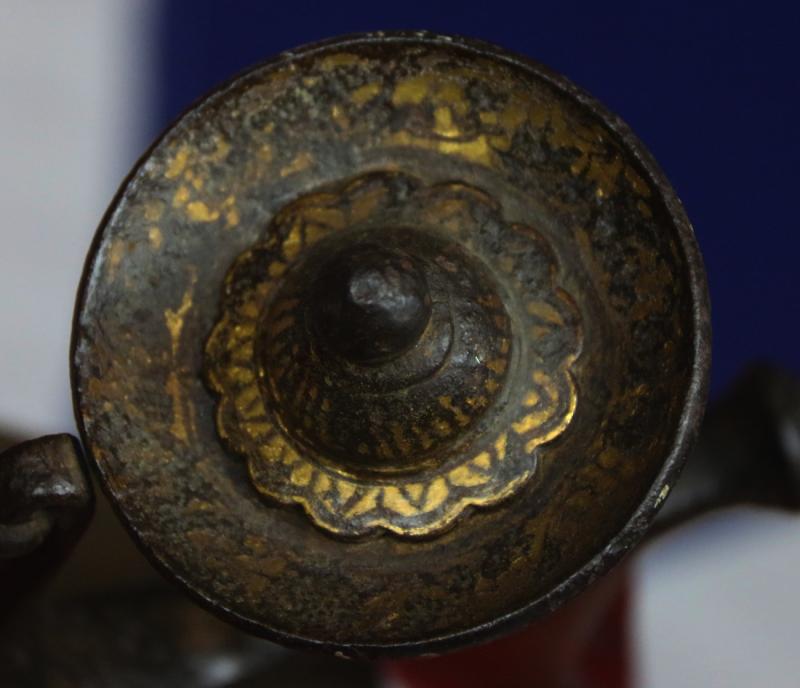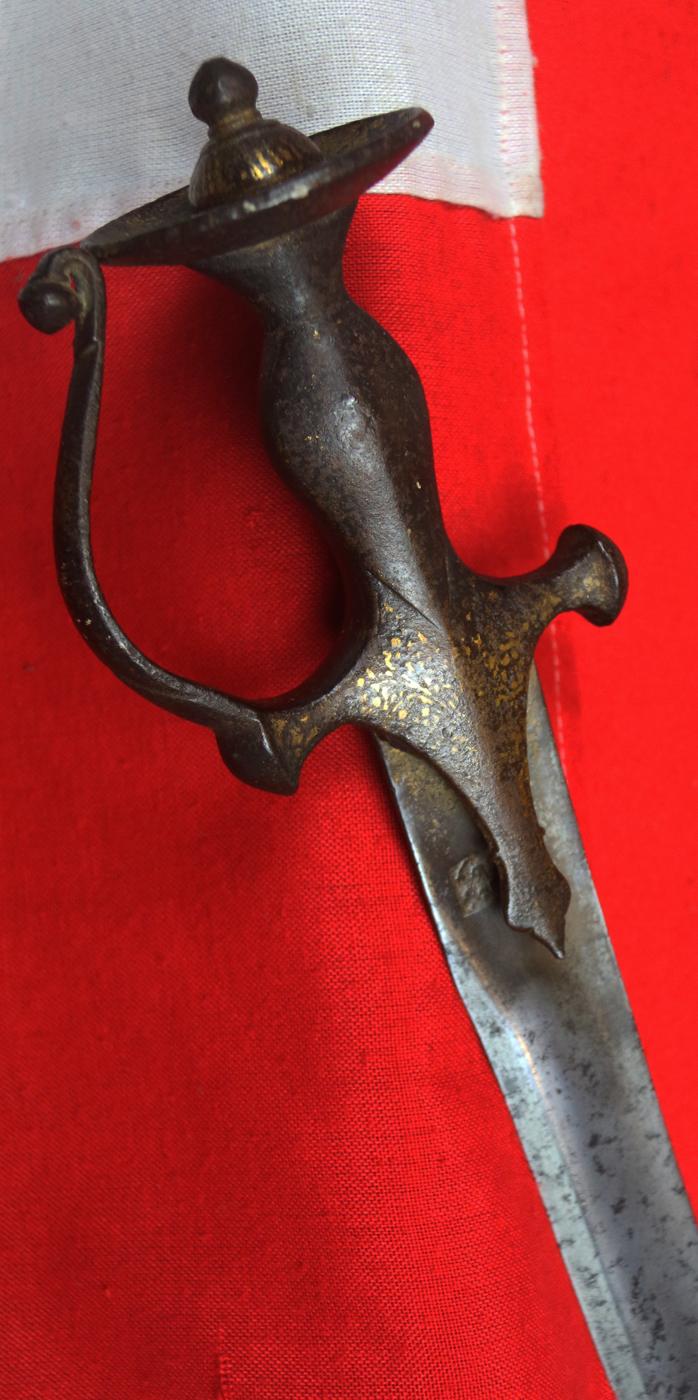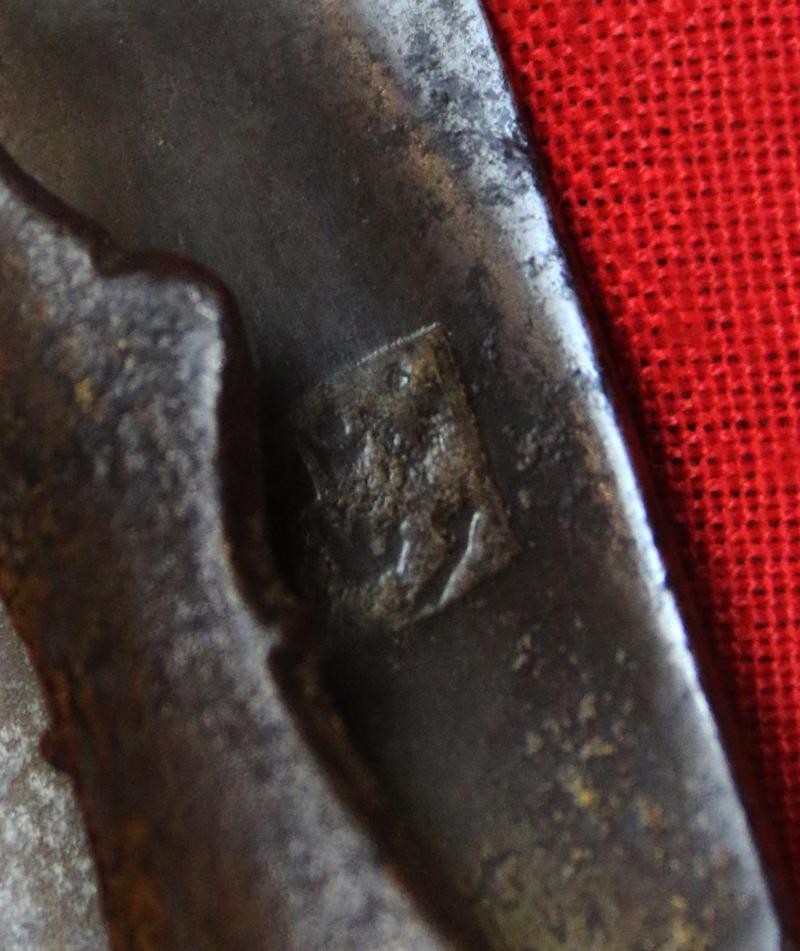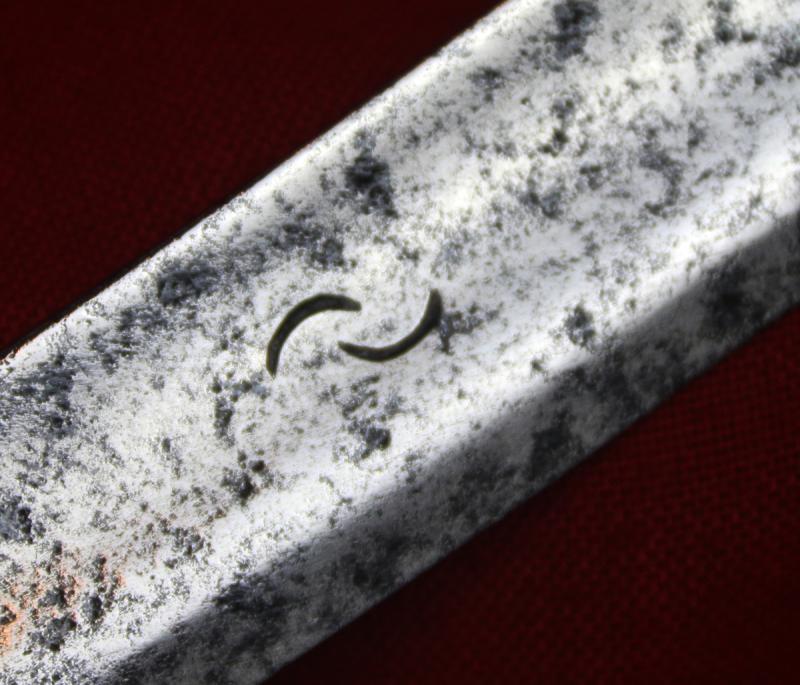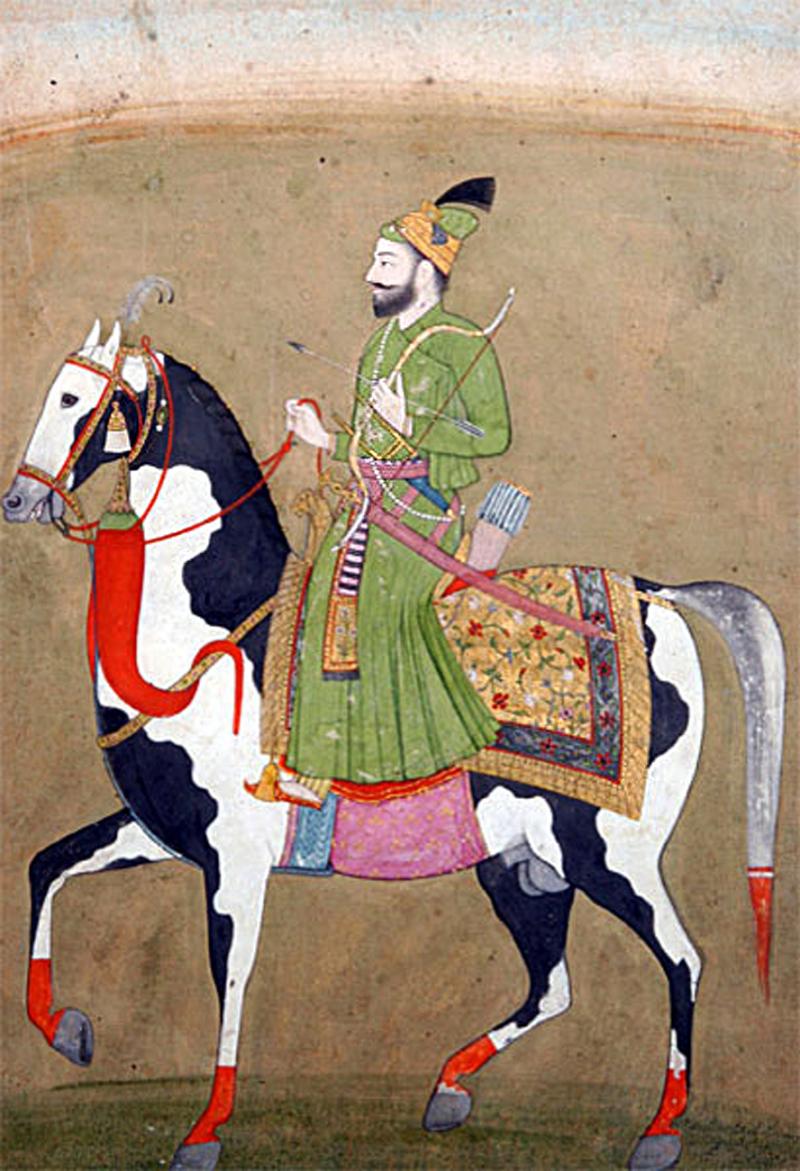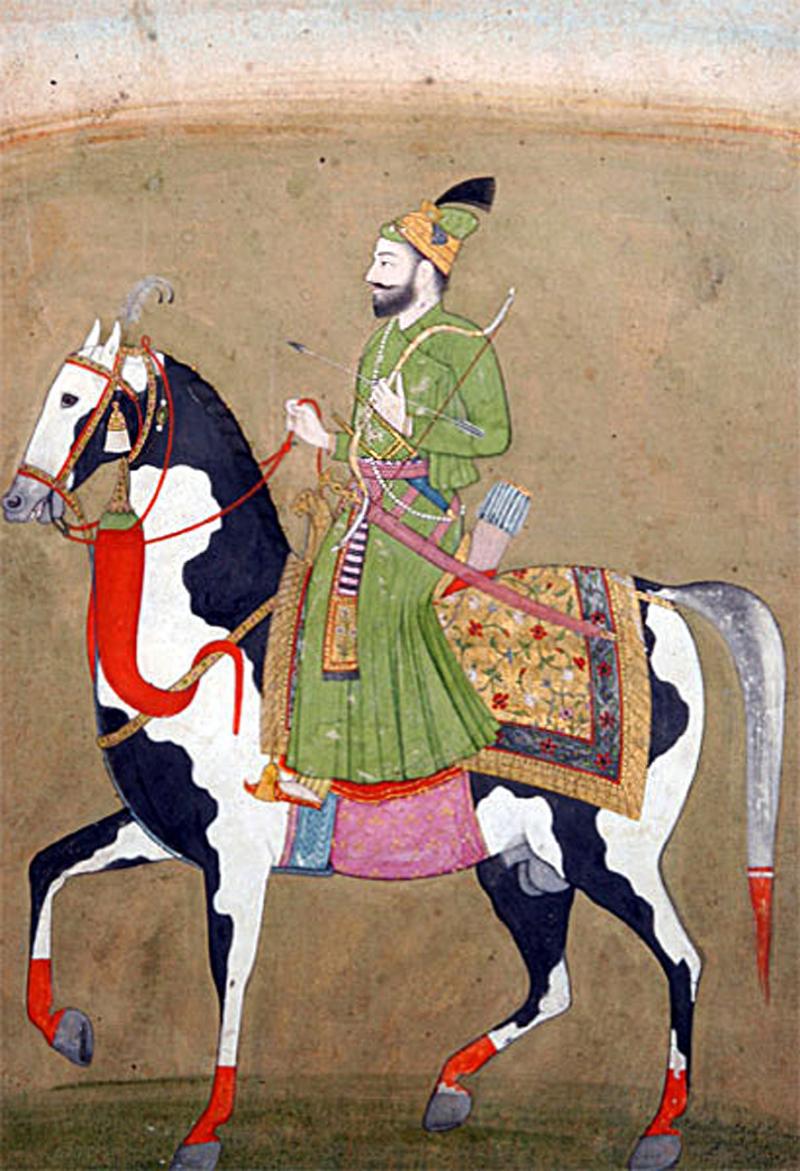A Beautiful 17th-18th Century Sikh Tulwar With Gold Inlaid Royal Hilt & Seal Stamped Blade, With Double Crescent Armourer’s Marks. It Has Just Returned From Expert Museum Grade Conservation, Polishing & Etching of The Blade To Reveal Its Stunning Pattern
The tulwar hilt is covered in pure gold Koftgari decoration. superb hybrid wootz Damascus shamshir blade with square seal mark and twin crescent armourer's mark to the blade. It has now returned from a no expense spared museum grade conservation and polish that has revealed its absolutely stunning hybrid wootz Damascus grain. The blade was not removed from the gold hilt, so the blade polishing had started below the hilt, in order to maintain its historical integrity. The beauty of this wonderful historical sword and blade is breathtaking in its combination of opulence and subtlety. The blade has a wondrous and elegant deep curvature, that joined with its material beauty is a joy to behold. It would have been a credit to the former Dr Leo S.Figial Collection that, until it’s auction and dispersal in 1998 at Butterfields Auction, was one of the finest in the world outside of any national museum.
Persian: شمشیر (type, which refers to a Persian or Iranian sword with a radical curve. The name is derived from the shamshīr, which means “lion’s claw or lions tale” in the Persian language – pointing towards the curve of the blade. These types of blades are normally used for slashing unarmored opponents either on foot or mounted; while the tip could be used for thrusting. In India, the term ‘Goliya’ (meaning circle) was used to describe these types of blades; referring to their curve.
The Tulwar had historically been the quintessential combat sword used by Sikhs as their sacred kirpan due to its superior handling while mounted on horseback. With a curved blade optimized for cutting and slashing with sweeping cuts delivered from the shoulder by a horseman the curved blade of the tulwar could strike repeated blows without the danger of the blade getting stuck in bone or armour. It allowed for fierce slashing on all sides cutting through enemy formations while mounted on horseback.
This tulwar has a curved blade of approximately 76cm in length with a graduating blade where it eventually begins its taper to the point. With its curved blade the point of the sword cannot be very effectively used for thrusting and the Tulwars defensive capabilities are limited. In this circumstance defence was taken up by using the shield (Dhal) in tandem with the Tulwar as an integral duo on the battlefield.
The blade was firmly attached to the hilt of the Tulwar commonly using a heated paste of lac or red dye from the papal tree which when it hardened provided a solid and effective adhesive between the two parts of the sword.
The hilt of the Tulwar has a button on top and a circular dished pommel disk featuring the koftgari design patterns of flowers in pure hammered gold. The grip of the Tulwar below the pommel disk narrows at the top and bottom while bulging out in the middle. The crossguard between the grip and the blade features two short but very thick rounded quillions. The index finger could be wrapped around a quillion rather than the grip providing the swordsman with extra maneuverability of the sword. Some Tulwars feature a knuckle guard extending from the quillion to the pommel disk, while others do not, both styles of Tulwars were commonly used by Sikhs.
The pure gold inlay upon the hilt is worn as is often the case due to its great age, but much still remains to show it wondrous quality and former royal status. The blade is now once more in superb condition for its age.
Guru Hargobind, { Guru Hargobind Sahib Ji } the 6th Sikh Guru is said to have always carried two such gold hilted Tulwars, representing his temporal and spiritual authority. They both had gold onlaid hilts just as this sword. It is possible, however slim, this sword may have been even the side arm of a member of the great Sikh Guru’s Darbar {court}. Guru Hargobind Sahib Ji was the first Sikh Guru to engage in warfare.
Guru HarGobind Ji excelled in matters of the state and his Darbar (Court) was noted for its splendor. The arming and training of some of his devoted followers began, and once the Guru came to possess seven hundred horses, his Risaldari (Army) grew to three hundred horsemen and sixty gunners. Additionally, five hundred men from the Majha area of Punjab were recruited as infantry. Guru HarGobind Ji built a fortress at Amritsar called Lohgarh (Fortress of Steel). He had his own flag and a war-drum which was beaten twice a day. Those who had worked to have Guru Arjan destroyed now turned their attention and efforts to convincing Jahangir that the Lohgarh fort, the Akal Takhat, and the growing Risaldari army were all intended to allow Guru HarGobind Ji to one day take revenge for his father's unjust death.
Code: 25574
3250.00 GBP


